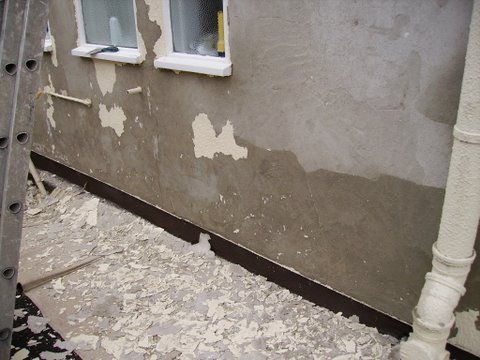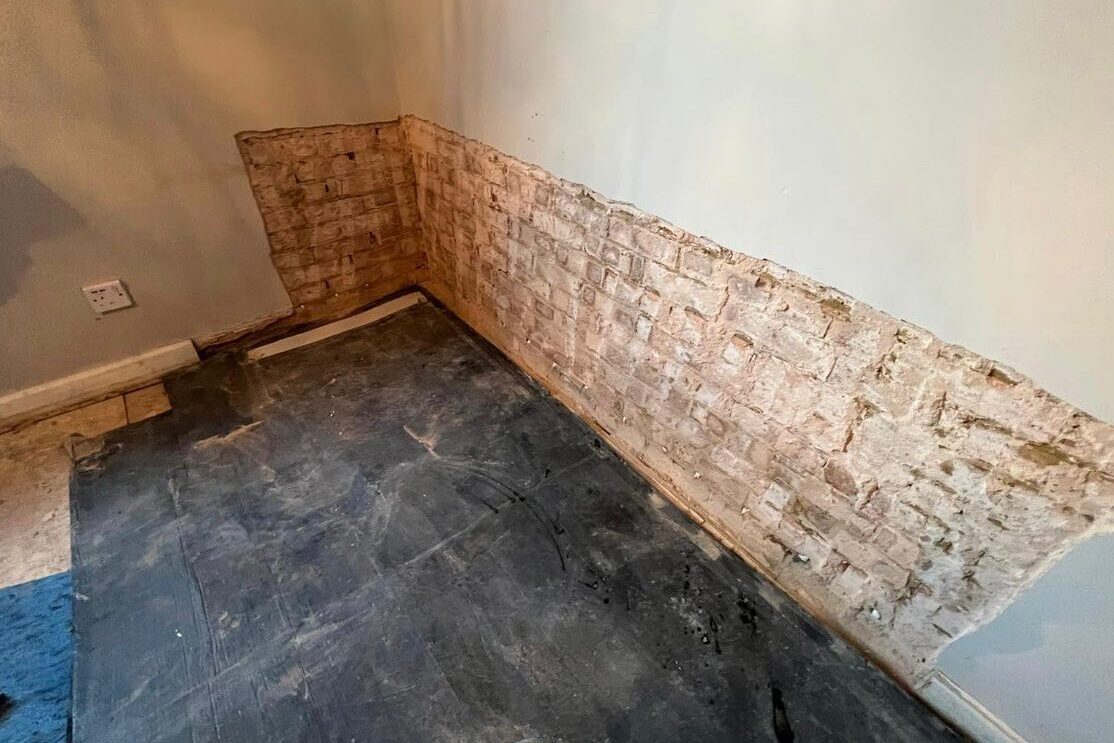What makes professional damp proofing newcastle essential for moisture prevention
What makes professional damp proofing newcastle essential for moisture prevention
Blog Article
Comprehending the Relevance of Damp Proofing in Stopping Structural Damages
Wet proofing functions as an essential defense versus wetness infiltration in structures. This safety measure can prevent considerable architectural damages, yet several residential property proprietors continue to be unaware of its relevance. Acknowledging the indicators of moisture and understanding the different options readily available can be important. Neglecting moist proofing can lead to serious repercussions. What are the details risks and options that homeowner should consider?
What Perspires Proofing and How Does It Function?
Wet proofing offers as an important barrier against moisture invasion in structures. damp removal newcastle. This process involves applying specific products and strategies to prevent water from penetrating wall surfaces, floorings, and other structural components. Commonly, damp proofing can be achieved through the setup of wet proof membrane layers, coverings, or making use of specialized sealants.These approaches work by creating a protective layer that prevents moisture activity, making sure that the indoor setting stays dry and healthy and balanced. Moist proofing is especially essential in locations susceptible to high moisture or groundwater, as it aids keep the stability of the framework over time.Moreover, reliable moist proofing adds to power effectiveness by protecting against heat loss associated with wet settings. By resolving prospective moisture concerns before they escalate, damp proofing acts as an aggressive step in securing structures from the detrimental impacts of water damages, ultimately extending their life expectancy and preserving their value
Typical Signs of Dampness in a Building
Wetness problems within a structure can materialize through numerous obvious indicators that suggest the existence of moisture. One popular sign is the appearance of water discolorations on wall surfaces or ceilings, which frequently suggests moisture infiltration. In addition, peeling off or gurgling paint can recommend that excess humidity is trapped beneath the surface, leading to wear and tear. An additional typical sign is the visibility of mold and mildew and mold, which grow in damp problems and can typically be identified by their moldy smell. A rise in humidity degrees can trigger condensation on home windows and various other surfaces, highlighting moisture problems. Deformed or irregular flooring might indicate underlying wetness that compromises architectural honesty. Recognizing these indications early can aid alleviate potential damage and keep a safe living setting. Regular evaluations and punctual action are essential in resolving moisture issues before they rise.
The Risks of Ignoring Damp Proofing
Neglecting wet proofing can bring about substantial risks to a structure's architectural integrity, as moisture accumulation may deteriorate wall surfaces and structures. Furthermore, extended wetness develops a setting for mold and mildew development, presenting severe health threats to owners. Dealing with these threats is important for making certain both safety and security and long life of the residential property.
Architectural Integrity Threats
When homeowners neglect the value of reliable moist proofing, they subject their buildings to substantial structural stability dangers. Prolonged dampness seepage can bring about the growth of mold, which deteriorates foundational elements and can compromise total stability. Furthermore, excess dampness can wear down concrete and brickwork, leading to splits and architectural failings. Wood elements are especially prone; they can rot and lose load-bearing capability, posturing significant threats to the building's framework. Untreated damp conditions might draw in insects, such as termites, which additionally aggravate architectural wear and tear. Inevitably, overlooking wet proofing procedures can bring about expensive repair work and potential safety threats, underscoring the necessary role of proactive moist management in maintaining the stability of houses.
Carcinogen Issues
Just how can a seemingly small oversight lead to major health and wellness threats? Ignoring wet proofing can produce a setting for mold development, which presents significant wellness hazards. Mold and mildew spores can cause sensitive responses, breathing concerns, and other health and wellness difficulties, specifically in susceptible populations such as youngsters, the elderly, and individuals with pre-existing problems. In addition, consistent dampness can draw in parasites like rats and bugs, which bring conditions that additionally endanger health. The presence of moisture also adds to a decrease in indoor air quality, worsening asthma and other breathing conditions. As a result, the failure to address damp concerns not just intimidates architectural integrity yet also threatens the wellness of residents, highlighting the vital need for efficient moist proofing steps.
Different Sorts Of Damp Proofing Solutions
Although numerous elements can contribute to damp concerns in buildings, picking the suitable moist proofing service is crucial for preserving architectural integrity. A number of alternatives are readily available, each customized to particular conditions.One typical solution is a damp-proof membrane (DPM), typically made from polyethylene or bitumen, which is installed in floors and wall surfaces to avoid dampness ingress. An additional alternative is damp-proof courses (DPC), which are layers of water resistant material placed within walls to obstruct climbing damp.Chemical damp proofing entails infusing waterproofing chemicals right into walls to produce a barrier versus moisture. Furthermore, external therapies such as tanking, which includes using a water-proof layer to the outside of structures, can be reliable in protecting against water penetration.Each solution has its benefits and is chosen based on the structure's specific problems, environmental conditions, and lasting maintenance factors to consider, making certain ideal security versus damp-related damage.

The Cost of Damp Damage vs. Prevention
Recognizing the financial effects of damp damages contrasted to avoidance highlights the significance of positive measures. The expenses related to damp damage can be substantial, consisting of fixings to architectural elements, mold remediation, and potential health-related costs. Property owners might deal with significant financial stress if extensive damage happens, resulting in enhanced insurance policy premiums and shed residential property value.In comparison, spending in wet proofing solutions is usually even more affordable. First expenses for avoidance methods, such as mounting damp-proof membrane layers or improving drain systems, are usually surpassed by the long-term financial savings from avoiding expensive repair work. In addition, avoiding moist concerns can enhance a building's general worth and charm, making it a sensible investment. When examining the cost of damp damages versus prevention, it comes to be clear that taking positive steps can secure monetary rate of interests and maintain the integrity of the residential property over time.
Choosing the Right Damp Proofing Technique for Your Home
Which moist proofing technique is most appropriate for a specific residential or commercial property commonly depends on various variables, consisting of the building's age, existing dampness problems, and local environmental conditions. For older frameworks, typical approaches such as bitumen membranes or cementitious finishes may be extra efficient, as they can supply a robust barrier versus rising wet. In comparison, newer buildings might benefit from modern services like injected damp-proof training courses, which are much less invasive and can be customized to details dampness challenges.Additionally, buildings in locations with high water tables or heavy rainfall might call for advanced strategies, such as tooth cavity wall water drainage systems or exterior waterproofing. House owners need to likewise consider the details materials utilized in their building's building, as some approaches might not work. Ultimately, a comprehensive evaluation by an expert can assist homeowner in selecting the most effective wet proofing approach customized to their one-of-a-kind situations.
Keeping Your Damp Proofing System Gradually
Regular maintenance of a moist proofing system is necessary for ensuring its long-term performance and protecting a building from moisture-related damages. Property owners should perform regular evaluations to identify any kind of signs of wear or compromise in the wet proofing layer. This includes monitoring for splits, peeling off paint, or mold development, which may suggest dampness intrusion.Additionally, it is a good idea to tidy rain gutters and downspouts on a regular basis to stop water buildup around the structure. If deterioration is observed.Engaging expert services for regular assessments can even more enhance the toughness of the system, reapplying membranes or sealers might be necessary. These specialists can provide insights into possible vulnerabilities and suggest timely fixings.
Frequently Asked Questions
Just How Long Does Damp Proofing Treatment Last Prior To Needing Repair Work?
The long life of moist proofing treatment check here commonly varies from 10 to 30 years, depending on factors such as the technique utilized, ecological problems, and maintenance methods. Regular inspections can help figure out when repair services might be required.
Is Do It Yourself Damp Proofing Effective Contrasted to Specialist Services?
The effectiveness of DIY wet proofing differs considerably. mould treatment newcastle. While some people may attain satisfying results, specialist services usually ensure extensive services, leveraging competence and quality products to stop future issues a lot more accurately than a lot of do it yourself attempts
Can Damp Proofing Improve Indoor Air High Quality?
The concern of whether wet proofing can boost indoor air quality occurs often. Effective wet proofing lowers moisture degrees, thereby lessening mold development and irritants, inevitably adding to a healthier interior atmosphere for occupants.
Exist Specific Regulations for Damp Proofing in Different Areas?
Rules for moist proofing vary by region, often affected by neighborhood building ordinance and ecological problems. Compliance warranties effective moisture control, advertising and safeguarding structures safety and security, which highlights the necessity for adherence to these specific policies.

What Are the Long-Term Advantages of Appropriate Damp Proofing?
The long-term benefits of correct wet proofing include boosted structural stability, reduced maintenance prices, improved indoor air top quality, and enhanced residential property worth. These benefits add to a much healthier living atmosphere and long term life expectancy of buildings. Normally, wet proofing can be attained with the installation of damp proof membrane layers, finishes, or the usage of specialized sealants.These approaches function by developing a protective layer that hinders dampness activity, making sure that the interior environment remains completely dry and healthy and balanced. Damp proofing is particularly crucial in areas susceptible to high moisture or groundwater, as it aids keep the honesty of the framework over time.Moreover, reliable wet proofing adds to power efficiency by preventing warm loss connected with wet settings. Disregarding wet proofing can lead to considerable threats to a building's architectural stability, as dampness accumulation might deteriorate structures and wall surfaces (mould removal newcastle). Numerous elements can contribute to damp concerns in structures, picking the proper wet proofing option is essential for protecting structural stability. Which moist proofing technique is most suitable for a particular home typically depends on various variables, including the building's age, existing wetness problems, and regional ecological problems
Report this page